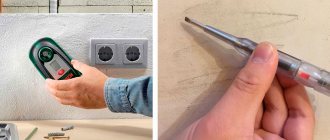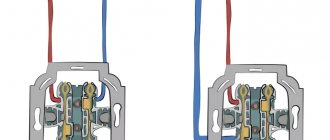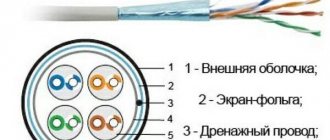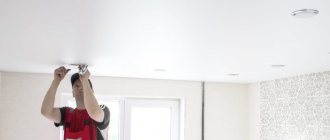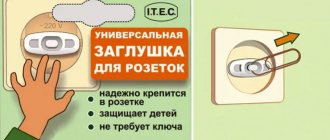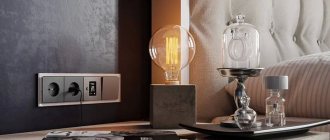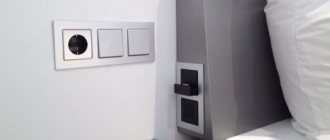Modern kitchens cannot do without a huge number of various household appliances, the operation of which requires a power source. In this matter, the main thing is not to overdo it and maintain the chosen interior style. Pull-out sockets for the kitchen are considered quite an interesting and unusual choice. Often such products are designed for countertops. They help organize your workspace rationally and correctly.
Possible options
Modules of this kind are considered an original solution in any kitchen. They are practical to use and often complement the design of the room. Currently, you can purchase a variety of models, unusual designs in the desired color.
A luxurious solution is the use of sockets built into the kitchen cabinet. This is an excellent analogue of an extension cord, which significantly simplifies the operation of household appliances.
According to their design, sockets are distinguished between horizontal and vertical placement.
Vertical sockets are manufactured with different heights and have certain functionality. Particularly popular are low versions in which the connectors are arranged in a circle.
There are options for two, three, five or more blocks, placed one above the other. They are relevant not only for connecting kitchen appliances, but also, for example, chargers.
Horizontal blocks are made with different numbers of power connectors. Now you can even purchase sockets with integrated input for the Internet, HDMI and USB.
Depending on the design, built-in blocks are:
- rotary;
- away.
Sockets can change their position in space around an axis by 360 or 180 degrees, respectively.
A number of manufacturers equip their products with additional lighting, due to which the room acquires a special, mysterious atmosphere.
The greatest reliability and ease of operation are typical for rotary sockets. Disadvantage: difficulty in simultaneous use of several devices with an “L-shaped” plug.
Recessed socket blocks are usually located in various places in the kitchen area, including: the countertop; wall cabinet; baseboard under the apron.
They are considered universal, since installation of the same block is often possible in different parts and elements of the kitchen. This type of socket can be placed in almost any convenient place on the headset.
It is important to consider that when choosing furniture fittings, you must always pay attention to its degree of protection. It is desirable that the hidden modules meet the IP44 requirements, since the kitchen is considered a room with high humidity, as well as a place where there is a possibility of small particles, dirt, etc. getting into the working elements.
Unique EUBIQ sockets are already in Moscow!
Eubiq (ebik) is the world's first system of non-static sockets with the highest degree of protection. This unique system is extremely practical, safe and exclusive! Mounted on a patented electrical profile, Eubiq sockets can be added, removed and moved anytime, anywhere - with just a simple twist.
Currently, there are more and more consumers of electricity in the home. At the same time, installing a large number of stationary sockets is expensive and still does not exclude binding to certain places. The Eubiq electrical profile is very easy to install and aesthetically pleasing from a design point of view, as it is made of high quality aluminum and can be concealed with a corian shelf. The manufacturer's assortment includes a huge number of different adapters for any purpose. The adapters can be installed at any point on the profile with a simple turning movement. The embodiment of modern Italian design combined with a unique set of advanced technologies from Singapore gives us all the opportunity to transform our home or any living space into an ideal place not only for relaxation, but also for work. Free yourself from the restrictions of the traditional electrical system and embrace the freedom of Eubiq. Access electricity where it's truly convenient for you.
Specifics of retractable blocks
Considering the comfort and ease of use of hidden sockets, the fittings can even be compared with built-in household appliances and corresponding cabinet kitchen furniture.
Thanks to their small dimensions, the blocks help to rationally use free space and simplify food preparation.
In fact, you can actually install them yourself, since you won’t have to install electrical lines and install boxes for sockets.
Hidden sockets can be chosen in almost any design and functionality. It would be good if they had grounding contacts.
The fittings are supplied with a 1-3 meter cord and plug, making it possible to connect it to household voltage. In some cases, units are produced without a plug, which allows you to further increase the cable length. An excellent choice are reusable collapsible forks.
The design of the retractable socket block is extremely clear. Initially it is hidden in the countertop or upper cabinet. To reach the sockets, you need to lightly press the top panel. After this, the block “moves out” by 10-20 mm, and you can manually move it to the required height or fix it in a given position - there is a corresponding button on the side. This way, you can do without carrying anything in the kitchen and not have to look for a free socket on the apron.
After finishing work with the retractable unit, it can be easily hidden in the tabletop by applying light pressure.
The vertical version can be equipped with additional ports for connecting audio, video equipment, devices with USB connectors, and others. There are also special blocks that are retracted into a niche along with the plugs of connected devices.
Rotary pull-out units with a mechanism activated by pressing on the surface of the lid are in great demand. The module moves out with a light touch - while the power sockets can be rotated to the required convenient position, at a given angle.
The angle depends on the selected model and can reach up to 180 degrees. This parameter is usually indicated on the product packaging.
The retractable rotary unit is often not equipped with a wire and plug, so do not forget to provide for this point.
Check the power of all electrical appliances
This information is on a label on the back; if you haven’t purchased the equipment yet, take the average values for such a device or specific ones - on the manufacturer’s website.
All this will help the electrician calculate the load on the network, the number of distribution boxes and cable thickness. This is especially important if you live in apartments - they are not subject to load standards adopted by SNiPs for residential premises; if there is not enough power, you will have to resolve this issue with the management company and power supply engineers.
The hood connection is made inconspicuously; at medium height - four sockets: enough space for appliances that will stand on the countertop
As a rule, kitchen electrical appliances require 10–15 kW of power, but you need to provide at least another 30–50% of the reserve; that is, the electrical wiring in the kitchen should be designed for approximately 20 kW of power - this will protect you from the risks of short circuits and from power surges, which can cause equipment to burn out.
Selection and installation of retractable units
There are no particular problems with how to remove a retractable socket from under the tabletop. The main attention should be paid to the model being purchased and its compliance with key requirements. The right choice allows you to subsequently receive positive emotions from using the right accessories. For an uninitiated buyer, understanding the variety offered on the market turns out to be difficult.
Consider how many power connectors you need in a hidden receptacle. Pay special attention to the total power of the equipment that will be used. Most often these are blocks designed for loads up to 3.5 kW. Relevant information can be found on the product packaging or instructions supplied with it.
Which cable to choose for the kitchen
Next, you need to calculate the cross-section of the common supply wire of the electrical panel and the outgoing wiring to each pantograph. Follow the rules here:
- for device loads up to 3.5 kW - copper cable VVGng-Ls 3*2.5mm2
- for device loads up to 5.5 kW - copper cable VVGng-Ls 3*4mm2
- with a total load of all devices up to 10 kW - copper cable VVGng-Ls 3*6mm2
- with a total load of all devices up to 15 kW - copper cable VVGng-Ls 3*10mm2
Why there should be a brand VVGnG-Ls is discussed in detail in the article below:
Even if you have a house with an old grounding system (without a third protective conductor), still do the wiring with a 3-core cable. This will save you in the future from additional costs for reconstruction and replacement of wires.
As a last resort, the third wire will be a backup for zero or phase, in case of a possible break or other damage.
Some information about the manufacturers
When purchasing recessed sockets, you must place your bet on a trusted manufacturer. The most popular today are the products of the German company Evoline, the Swiss company Kondator, and the Italian factory Simon Connect. From the French it is worth highlighting Schneider Electric, the Poles - GTV, and the Russians - Ekoplast. Most often, submersible sockets are made from high-quality and durable materials.
Companies that have been in the kitchen accessories market for a long time try to monitor reviews of their products and guarantee their trouble-free operation. If a regular overhead socket is not suitable, and you don’t have enough money for a good brand, you can easily get by with “Chinese” ones, including Desc Socket or Displace. Mortise blocks are visually very similar to the original prototypes, but may be significantly inferior to them in manufacturing quality.
Chinese sockets, as a rule, are made from very cheap components, which is why their performance is limited to 6-12 months. Problems may arise gradually. At first, the integrated block opens on its own and does not lock in the specified position. After this, the contact weakens, the plastic begins to heat up, which ultimately leads to failure.
It is advisable to protect the corresponding power lines with good differential circuit breakers.
It is incredibly easy to find a suitable option that matches the kitchen interior and furniture design. Recessed, pop-up sockets are available in various colors. Particularly appreciated are options finished in natural gold, silver, bronze, polished stainless steel, with black, white and other coatings. Before purchasing, the selected item should always be checked for damage and completeness.
More about brands
Products from the Polish company GTV (Werkpol) are well known to furniture production specialists. Most often you have to deal with high-quality fittings.
The production of electrical devices has also relatively recently begun under the same brand. The advantage of the products is their relative availability and reliability. The range includes horizontal and vertical electrical sockets.
Legrand is a leader in the production of electrical products. The main “headquarters” is located in France. The holding has mastered the production of 215 product models and received patents for 4,500 of its own projects.
The company's enterprises are located in 80 countries around the world, employing 36,000 people. The company's annual cash turnover reaches 4,500 thousand euros. The common man may be familiar with the following brands of the Legrand group - Vantage, BTicino, Cablofil, Estap.
The domestic market of the Legrand company is represented by electrical fittings, socket blocks of stationary and retractable versions. The products are available in the most popular color options, including white, gold, metallic, black and silver. Sockets are made modular, the total number of connectors in which can reach up to 8 units. Retractable samples are characterized by smooth operation and ease of pressing.
Another serious manufacturer of electrical accessories is the German company Evoline, known for its products since 1964. Today it is one of the European leaders in the development of innovative solutions. Over the entire period of its existence, the manufacturer has officially registered and patented over 300 different discoveries in the field of electrical engineering.
Evoline production facilities are located in Germany, the city of Lüdenscheid. It is here that more than 1,500 thousand units of products are produced annually. Among the built-in fittings, the modular model PortCuisine should be noted. One device can have standard grounded outlets, HDMI digital inputs, USB ports and telephone jacks.
It is also worth noting the production of the Swedish company Kondator, which offers built-in socket blocks with vertical placement. Unlike many other companies, it produces fittings in an aluminum case.
Particular attention should be paid to the SmartlinePopup line of three modules. There are options for different numbers of power contacts. Possible versions with Rj45, HDMI ports, connectors for VGA, USB, audio devices.
Selecting a socket and its installation location
Before choosing a specific model of a hidden outlet, you need to decide on the location of its placement. It is important that the installed unit is easily accessible and convenient for daily use. Based on these considerations, specific fittings are selected. But, as practice has shown, among the wide variety it is difficult to fix your gaze on just one model.
It is important to purchase a socket that has a sufficient number of connectors, taking into account all the expected household appliances. It is necessary to place the unit in the most convenient and accessible place for normal operation.
Safety rules: It is not recommended to place sockets near the sink and stove. The minimum permissible distance from the source of heat and fire must be at least 600 mm.
What interior style would suit built-in sockets?
It's safe to say that hidden sockets will look great in a kitchen decorated in any style. And it is not just words. For example, in a room decorated in a high-tech style, they perfectly complement the overall idea, as they look very modern.
But in a kitchen decorated in a classic style, sockets and wires generally look quite foreign and destroy the clearly defined design. Therefore, hidden models for such an interior will be an ideal choice.
Can I install it myself?
Retractable sockets of any type, including mobile ones on a bus, are not difficult to install on your own. The work is performed with a minimum set of tools. The only difficulty that can arise is making holes in the countertop for placing sockets. They are usually done either by drilling or with a regular electric jigsaw (if it is chipboard). Many manufacturers make this kind of additive in production.
The unit usually comes with installation instructions. Often, all that needs to be done is to install the device into the hole in the countertop, secure it with a ring on the thread and connect it to one of the kitchen outlets. Can be connected directly to a power cable, for example, from an electric stove.
All work should be done when there is no voltage in the network!
Check that outlets are located safely
Sockets and switches that you use daily should be no closer than 30–50 centimeters from the sink.
For electrical outlets for connecting stationary equipment, such as a dishwasher or a built-in electric stove, the standards are more relaxed - a clear distance to the wet area is not defined, but sockets are prohibited from being placed above and below the sink. This is important so that a short circuit does not occur if the mixer fails or a leak occurs for another reason.
sockets and switches should be located no closer than 30–50 cm from the sink
Sockets cannot be arranged in groups of more than 5 pieces - and for each such loop connection you need to pull a line from the panel with a separate RCD (residual current device). Dedicated lines are also required for high-power appliances - electric stoves, ovens, etc.
Advantages and disadvantages
Having studied the available offers on the market, looked at detailed photos of the fittings you are interested in, and decided on how to hide the socket, it is important to take into account all the existing positive and negative aspects of the fittings in question.
Hidden or, as they are also called, built-in blocks allow you to save free space and use it rationally. The main advantages include:
- possibility of vertical and horizontal placement;
- modern, interesting and versatile design;
- Availability of sockets with grounding and moisture protection;
- compactness and small dimensions;
- availability of options with additional connectors for a USB cable, Internet, television cable and telephone;
- Possibility of installation on a top cabinet, countertop made of natural, artificial stone or chipboard.
Significant disadvantages include:
- the need to make a special mounting hole, which may require the appropriate tool;
- overpriced relative to classic wall sockets;
- impossibility of installation on cases with drawers;
- shorter service life, low reliability relative to stationary options.
In addition, retractable sockets require careful handling during operation. When pulling out the plug, you must always hold the main unit so as not to damage it.
Features of operation
To ensure that a brand new gadget lasts as long as possible and does not bother the owner with constant breakdowns, it is recommended to follow a number of rules for operating built-in electrical appliances:
- Check the wiring periodically. It should not touch the stove, be pinched by furniture, or go under the sink.
- Try not to constantly subject the retractable unit to maximum loads - this will lead to overheating of the structure. Some models are equipped with an indicator showing the level of load on the gadget.
- If electrical appliances plugged into a pull-out socket are used constantly, install separate sockets for them. In the open position, the built-in unit will interfere with the table surface.
- When using a vertical block, hold it with your hand when connecting/disconnecting equipment.


